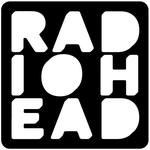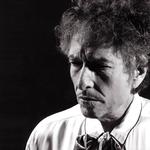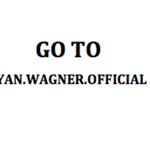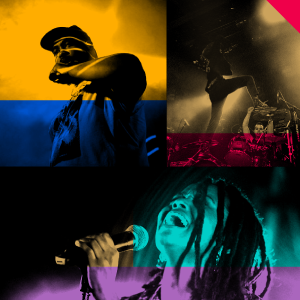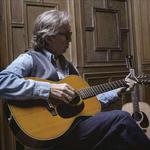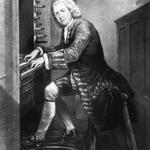
Johann Sebastian Bach
Johann Sebastian Bach (21 March 1685, Eisenach O.S. – 28 July 1750 N.S.) was a prolific German composer and organist whose sacred and secular works for choir, orchestra, and solo instruments drew together the strands of the Baroque period and brought it to its ultimate maturity. Although he introduced no new forms, he enriched the prevailing German style with a robust contrapuntal technique, a control of harmonic and motivic organisation from the smallest to the largest scales, and the adaptation of rhythms and textures from abroad, particularly Italy and France.
Revered for their intellectual depth and technical and artistic beauty, Bach's works include the 6 Brandenburg concertos; the Goldberg Variations; the English Suites, French Suites, Partitas, and Well-Tempered Clavier; the Mass in B Minor; the St Matthew Passion; the St. John Passion; The Musical Offering; The Art of Fugue; the Sonatas and Partitas for violin solo; the Cello Suites; more than 200 surviving cantatas; and a similar number of organ works, including the celebrated Toccata and Fugue in D Minor.
While Bach's fame as an organist was great during his lifetime, he was not particularly well-known as a composer. His adherence to Baroque forms and contrapuntal style was considered "old-fashioned" by his contemporaries, especially late in his career when the musical fashion tended towards Rococo and later Classical styles. A revival of interest and performances of his music began early in the 19th century, and he is now widely considered to be one of the greatest composers in the Western tradition.
J.S. Bach's works are indexed with BWV numbers, an initialism for Bach Werke Verzeichnis (Bach Works Catalogue). The catalogue, published in 1950, was compiled by Wolfgang Schmieder. The catalogue is organised thematically, rather than chronologically: BWV 1–224 are cantatas, BWV 225–249 the large-scale choral works, BWV 250–524 chorales and sacred songs, BWV 525–748 organ works, BWV 772–994 other keyboard works, BWV 995–1000 lute music, BWV 1001–40 chamber music, BWV 1041–71 orchestral music, and BWV 1072–1126 canons and fugues. In compiling the catalogue, Schmieder largely followed the Bach Gesellschaft Ausgabe, a comprehensive edition of the composer's works that was produced between 1850 and 1905.
Bach was best known during his lifetime as an organist, organ consultant, and composer of organ works in both the traditional German free genres such as preludes, fantasias, and toccatas, and stricter forms such as chorale preludes and fugues. He established a reputation at a young age for his great creativity and ability to integrate foreign styles into his organ works. A decidedly North German influence was exerted by Georg Böhm, with whom Bach came into contact in Lüneburg, and Dieterich Buxtehude in Lübeck, whom the young organist visited in 1704 on an extended leave of absence from his job in Arnstadt. Around this time, Bach copied the works of numerous French and Italian composers to gain insights into their compositional languages, and later arranged violin concertos by Vivaldi and others for organ and harpsichord. His most productive period (1708–14) saw the composition of several pairs of preludes and fugues and toccatas and fugues, and of the Orgelbüchlein ("Little organ book"), an unfinished collection of 45 short chorale preludes that demonstrate compositional techniques in the setting of chorale tunes. After he left Weimar, Bach's output for organ fell off, although his best-known works (the six trio sonatas, the Clavierübung III of 1739, and the "Great eighteen" chorales, revised late in his life) were all composed after this time. Bach was extensively engaged later in his life in consulting on organ projects, testing newly built organs, and dedicating organs in afternoon recitals.[16][17] One of the high points may be the third part of the Clavierübung, a setting of 21 chorale preludes uniting the traditional Catholic Missa with the Lutheran catechism liturgy, the whole set interpolated between a mighty Prelude and Fugue on the theme of the Trinity.
Bach wrote many works for the harpsichord, some of which may also have been played on the clavichord. Many of his keyboard works are anthologies that show an eagerness to encompass whole theoretical systems in an encyclopaedic fashion.
* The Well-Tempered Clavier, Books 1 and 2 (BWV 846–893). Each book comprises a prelude and fugue in each of the 24 major and minor keys (thus, the whole collection is often referred to as 'the 48'). "Well-tempered" in the title refers to the temperament (system of tuning); many temperaments before Bach's time were not flexible enough to allow compositions to move through more than just a few keys.
* The 15 Inventions and 15 Sinfonias (BWV 772–801). These are short two- and three-part contrapuntal works arranged in order of key signatures of increasing sharps and flats, omitting some of the less used ones. The pieces were intended by Bach for instructional purposes.
* Three collections of dance suites: the English Suites (BWV 806–811), the French Suites (BWV 812–817) and the Partitas for keyboard (BWV 825–830). Each collection contains six suites built on the standard model (Allemande–Courante–Sarabande–(optional movement)–Gigue). The English Suites closely follow the traditional model, adding a prelude before the allemande and including a single movement between the sarabande and the gigue. The French Suites omit preludes, but have multiple movements between the sarabande and the gigue. The partitas expand the model further with elaborate introductory movements and miscellaneous movements between the basic elements of the model.
* The Goldberg Variations (BWV 988), an aria with thirty variations. The collection has a complex and unconventional structure: the variations build on the bass line of the aria, rather than its melody, and musical canons are interpolated according to a grand plan. There are nine canons within the 30 variations, one placed every three variations between variations 3 and 27. These variations move in order from canon at the unison to canon at the ninth. The first eight are in pairs (unison and octave, second and seventh, third and sixth, fourth and fifth). The ninth canon stands on its own due to compositional dissimilarities.
* Miscellaneous pieces such as the Overture in the French Style (French Overture, BWV 831) Chromatic Fantasia and Fugue (BWV 903), and the Italian Concerto (BWV 971).
Among Bach's lesser known keyboard works are seven toccatas (BWV 910–916), four duets (BWV 802–805), sonatas for keyboard (BWV 963–967), the Six Little Preludes (BWV 933–938) and the Aria variata alla maniera italiana (BWV 989)
Bach wrote music for single instruments, duets and small ensembles. Bach's works for solo instruments – the six sonatas and partitas for violin (BWV 1001–1006), the six cello suites (BWV 1007–1012) and the Partita for solo flute (BWV 1013) – may be listed among the most profound works in the repertoire. Bach also composed a suite and several other works for solo lute. He wrote trio sonatas; solo sonatas (accompanied by continuo) for the flute and for the viola da gamba; and a large number of canons and ricercare, mostly for unspecified instrumentation. The most significant examples of the latter are contained in The Art of Fugue and The Musical Offering.
Bach's best-known orchestral works are the Brandenburg concertos, so named because he submitted them in the hope of gaining employment from Margrave Christian Ludwig of Brandenburg-Schwedt in 1721; his application was unsuccessful. These works are examples of the concerto grosso genre. Other surviving works in the concerto form include two violin concertos (BWV 1041, and BWV 1042); a Concerto for Two Violins in D Minor (BWV 1043), often referred to as Bach's "double" concerto; and concertos for one, two, three and even four harpsichords. It is widely accepted that many of the harpsichord concertos were not original works, but arrangements of his concertos for other instruments now lost. A number of violin, oboe and flute concertos have been reconstructed from these. In addition to concertos, Bach also wrote four orchestral suites, a series of stylised dances for orchestra, each preceded by a French overture. The work now known as the Air on the G String is an arrangement for the violin made in the nineteenth century from the second movement of the Orchestral Suite No. 3.
In his later years and after his death, Bach's reputation as a composer declined; his work was regarded as old-fashioned compared to the emerging classical style. Initially he was remembered more as a player, teacher and as the father of his children, most notably Johann Christian and Carl Philipp Emanuel. (Two other children, Wilhelm Friedmann and Johann Christoph Friedrich, were also composers.)
During this time, his works for keyboard were those most appreciated and composers ever since have acknowledged his mastery of the genre. Mozart, Beethoven, and Chopin were among his most prominent admirers. On a visit to Thomasschule, for example, Mozart heard a performance of one of the motets (BWV 225) and exclaimed "Now, here is something one can learn from!"; on being given the motets' parts, "Mozart sat down, the parts all around him, held in both hands, on his knees, on the nearest chairs. Forgetting everything else, he did not stand up again until he had looked through all the music of Sebastian Bach". Beethoven was a devotee, learning the Well-Tempered Clavier as a child and later calling Bach the "Urvater der Harmonie" ("Original father of Harmony") and, in a pun on the literal meaning of Bach's name, "nicht Bach, sondern Meer" ("not a brook, but a sea"). Before performing a concert, Chopin used to lock himself away and play Bach's music. Several notable composers such as Mozart, Beethoven, Schumann and Mendelssohn began writing in a more contrapuntal style after being introduced to Bach's music.
Today the "Bach style" continues to influence musical composition, from hymns and religious works to pop and rock. Many of Bach's themes—particularly the theme from Toccata and Fugue in D minor—have been used in rock songs repeatedly and have received notable popularity. Bach has even been referred to as "the father of all music."[18]
The revival in the composer's reputation among the wider public was prompted in part by Johann Nikolaus Forkel's 1802 biography, which was read by Beethoven. Goethe became acquainted with Bach's works relatively late in life, through a series of performances of keyboard and choral works at Bad Berka in 1814 and 1815; in a letter of 1827 he compared the experience of listening to Bach's music to "eternal harmony in dialogue with itself".[19] But it was Felix Mendelssohn who did the most to revive Bach's reputation with his 1829 Berlin performance of the St Matthew Passion. Hegel, who attended the performance, later called Bach a "grand, truly Protestant, robust and, so to speak, erudite genius which we have only recently learned again to appreciate at its full value".[20] Mendelssohn's promotion of Bach, and the growth of the composer's stature, continued in subsequent years. The Bach Gesellschaft (Bach Society) was founded in 1850 to promote the works, publishing a comprehensive edition over the subsequent half century.
Thereafter Bach's reputation has remained consistently high. During the twentieth century, the process of recognising the musical as well as the pedagogic value of some of the works has continued, perhaps most notably in the promotion of the Cello Suites by Pablo Casals. Another development has been the growth of the "authentic" or period performance movement, which as far as possible attempts to present the music as the composer intended it. Examples include the playing of keyboard works on the harpsichord rather than a modern grand piano and the use of small choirs or single voices instead of the larger forces favoured by nineteenth- and early twentieth-century performers.
Johann Sebastian Bach's contributions to music, or, to borrow a term popularised by his student Lorenz Christoph Mizler, his "musical science", are frequently bracketed with those by William Shakespeare in English literature and Isaac Newton in physics. Scientist and author Lewis Thomas once suggested how the people of Earth should communicate with the universe: "I would vote for Bach, all of Bach, streamed out into space, over and over again. We would be bragging of course, but it is surely excusable to put the best possible face on at the beginning of such an acquaintance. We can tell the harder truths later."
Some composers have paid tribute to Bach by setting his name in musical notes (B-flat, A, C, B-natural; B-natural is notated as "H" in German musical texts, whilst B-flat is just "B") or using contrapuntal derivatives. Liszt, for example, wrote a praeludium and fugue on this BACH motif (existing in versions both for organ and piano). Bach himself set the precedent for this musical acronym, most notably in Contrapunctus XIV from the Art of Fugue. Whereas Bach also conceived this cruciform melody (among other similar ones) as a sign of devotion to Christ and his cross, later composers have employed the BACH motif in homage to the composer himself.
Some of the greatest composers since Bach have written works which explicitly pay homage to him. Examples include Beethoven's Diabelli Variations, Shostakovich's Preludes and Fugues, Brahms's Cello Sonata in E, whose finale is based on themes from the Art of Fugue. A 20th century work very strongly influenced by Bach is Villa-Lobos's Bachianas brasileiras. Stephen Sondheim once claimed he listened to no one else except Bach.
He is commemorated as a musician in the Calendar of Saints of the Lutheran Church on July 28.
On tour
No
Followers
358,916
Similar Artists On Tour
About Johann Sebastian Bach
Johann Sebastian Bach (21 March 1685, Eisenach O.S. – 28 July 1750 N.S.) was a prolific German composer and organist whose sacred and secular works for choir, orchestra, and solo instruments drew together the strands of the Baroque period and brought it to its ultimate maturity. Although he introduced no new forms, he enriched the prevailing German style with a robust contrapuntal technique, a control of harmonic and motivic organisation from the smallest to the largest scales, and the adaptation of rhythms and textures from abroad, particularly Italy and France.
Revered for their intellectual depth and technical and artistic beauty, Bach's works include the 6 Brandenburg concertos; the Goldberg Variations; the English Suites, French Suites, Partitas, and Well-Tempered Clavier; the Mass in B Minor; the St Matthew Passion; the St. John Passion; The Musical Offering; The Art of Fugue; the Sonatas and Partitas for violin solo; the Cello Suites; more than 200 surviving cantatas; and a similar number of organ works, including the celebrated Toccata and Fugue in D Minor.
While Bach's fame as an organist was great during his lifetime, he was not particularly well-known as a composer. His adherence to Baroque forms and contrapuntal style was considered "old-fashioned" by his contemporaries, especially late in his career when the musical fashion tended towards Rococo and later Classical styles. A revival of interest and performances of his music began early in the 19th century, and he is now widely considered to be one of the greatest composers in the Western tradition.
J.S. Bach's works are indexed with BWV numbers, an initialism for Bach Werke Verzeichnis (Bach Works Catalogue). The catalogue, published in 1950, was compiled by Wolfgang Schmieder. The catalogue is organised thematically, rather than chronologically: BWV 1–224 are cantatas, BWV 225–249 the large-scale choral works, BWV 250–524 chorales and sacred songs, BWV 525–748 organ works, BWV 772–994 other keyboard works, BWV 995–1000 lute music, BWV 1001–40 chamber music, BWV 1041–71 orchestral music, and BWV 1072–1126 canons and fugues. In compiling the catalogue, Schmieder largely followed the Bach Gesellschaft Ausgabe, a comprehensive edition of the composer's works that was produced between 1850 and 1905.
Bach was best known during his lifetime as an organist, organ consultant, and composer of organ works in both the traditional German free genres such as preludes, fantasias, and toccatas, and stricter forms such as chorale preludes and fugues. He established a reputation at a young age for his great creativity and ability to integrate foreign styles into his organ works. A decidedly North German influence was exerted by Georg Böhm, with whom Bach came into contact in Lüneburg, and Dieterich Buxtehude in Lübeck, whom the young organist visited in 1704 on an extended leave of absence from his job in Arnstadt. Around this time, Bach copied the works of numerous French and Italian composers to gain insights into their compositional languages, and later arranged violin concertos by Vivaldi and others for organ and harpsichord. His most productive period (1708–14) saw the composition of several pairs of preludes and fugues and toccatas and fugues, and of the Orgelbüchlein ("Little organ book"), an unfinished collection of 45 short chorale preludes that demonstrate compositional techniques in the setting of chorale tunes. After he left Weimar, Bach's output for organ fell off, although his best-known works (the six trio sonatas, the Clavierübung III of 1739, and the "Great eighteen" chorales, revised late in his life) were all composed after this time. Bach was extensively engaged later in his life in consulting on organ projects, testing newly built organs, and dedicating organs in afternoon recitals.[16][17] One of the high points may be the third part of the Clavierübung, a setting of 21 chorale preludes uniting the traditional Catholic Missa with the Lutheran catechism liturgy, the whole set interpolated between a mighty Prelude and Fugue on the theme of the Trinity.
Bach wrote many works for the harpsichord, some of which may also have been played on the clavichord. Many of his keyboard works are anthologies that show an eagerness to encompass whole theoretical systems in an encyclopaedic fashion.
* The Well-Tempered Clavier, Books 1 and 2 (BWV 846–893). Each book comprises a prelude and fugue in each of the 24 major and minor keys (thus, the whole collection is often referred to as 'the 48'). "Well-tempered" in the title refers to the temperament (system of tuning); many temperaments before Bach's time were not flexible enough to allow compositions to move through more than just a few keys.
* The 15 Inventions and 15 Sinfonias (BWV 772–801). These are short two- and three-part contrapuntal works arranged in order of key signatures of increasing sharps and flats, omitting some of the less used ones. The pieces were intended by Bach for instructional purposes.
* Three collections of dance suites: the English Suites (BWV 806–811), the French Suites (BWV 812–817) and the Partitas for keyboard (BWV 825–830). Each collection contains six suites built on the standard model (Allemande–Courante–Sarabande–(optional movement)–Gigue). The English Suites closely follow the traditional model, adding a prelude before the allemande and including a single movement between the sarabande and the gigue. The French Suites omit preludes, but have multiple movements between the sarabande and the gigue. The partitas expand the model further with elaborate introductory movements and miscellaneous movements between the basic elements of the model.
* The Goldberg Variations (BWV 988), an aria with thirty variations. The collection has a complex and unconventional structure: the variations build on the bass line of the aria, rather than its melody, and musical canons are interpolated according to a grand plan. There are nine canons within the 30 variations, one placed every three variations between variations 3 and 27. These variations move in order from canon at the unison to canon at the ninth. The first eight are in pairs (unison and octave, second and seventh, third and sixth, fourth and fifth). The ninth canon stands on its own due to compositional dissimilarities.
* Miscellaneous pieces such as the Overture in the French Style (French Overture, BWV 831) Chromatic Fantasia and Fugue (BWV 903), and the Italian Concerto (BWV 971).
Among Bach's lesser known keyboard works are seven toccatas (BWV 910–916), four duets (BWV 802–805), sonatas for keyboard (BWV 963–967), the Six Little Preludes (BWV 933–938) and the Aria variata alla maniera italiana (BWV 989)
Bach wrote music for single instruments, duets and small ensembles. Bach's works for solo instruments – the six sonatas and partitas for violin (BWV 1001–1006), the six cello suites (BWV 1007–1012) and the Partita for solo flute (BWV 1013) – may be listed among the most profound works in the repertoire. Bach also composed a suite and several other works for solo lute. He wrote trio sonatas; solo sonatas (accompanied by continuo) for the flute and for the viola da gamba; and a large number of canons and ricercare, mostly for unspecified instrumentation. The most significant examples of the latter are contained in The Art of Fugue and The Musical Offering.
Bach's best-known orchestral works are the Brandenburg concertos, so named because he submitted them in the hope of gaining employment from Margrave Christian Ludwig of Brandenburg-Schwedt in 1721; his application was unsuccessful. These works are examples of the concerto grosso genre. Other surviving works in the concerto form include two violin concertos (BWV 1041, and BWV 1042); a Concerto for Two Violins in D Minor (BWV 1043), often referred to as Bach's "double" concerto; and concertos for one, two, three and even four harpsichords. It is widely accepted that many of the harpsichord concertos were not original works, but arrangements of his concertos for other instruments now lost. A number of violin, oboe and flute concertos have been reconstructed from these. In addition to concertos, Bach also wrote four orchestral suites, a series of stylised dances for orchestra, each preceded by a French overture. The work now known as the Air on the G String is an arrangement for the violin made in the nineteenth century from the second movement of the Orchestral Suite No. 3.
In his later years and after his death, Bach's reputation as a composer declined; his work was regarded as old-fashioned compared to the emerging classical style. Initially he was remembered more as a player, teacher and as the father of his children, most notably Johann Christian and Carl Philipp Emanuel. (Two other children, Wilhelm Friedmann and Johann Christoph Friedrich, were also composers.)
During this time, his works for keyboard were those most appreciated and composers ever since have acknowledged his mastery of the genre. Mozart, Beethoven, and Chopin were among his most prominent admirers. On a visit to Thomasschule, for example, Mozart heard a performance of one of the motets (BWV 225) and exclaimed "Now, here is something one can learn from!"; on being given the motets' parts, "Mozart sat down, the parts all around him, held in both hands, on his knees, on the nearest chairs. Forgetting everything else, he did not stand up again until he had looked through all the music of Sebastian Bach". Beethoven was a devotee, learning the Well-Tempered Clavier as a child and later calling Bach the "Urvater der Harmonie" ("Original father of Harmony") and, in a pun on the literal meaning of Bach's name, "nicht Bach, sondern Meer" ("not a brook, but a sea"). Before performing a concert, Chopin used to lock himself away and play Bach's music. Several notable composers such as Mozart, Beethoven, Schumann and Mendelssohn began writing in a more contrapuntal style after being introduced to Bach's music.
Today the "Bach style" continues to influence musical composition, from hymns and religious works to pop and rock. Many of Bach's themes—particularly the theme from Toccata and Fugue in D minor—have been used in rock songs repeatedly and have received notable popularity. Bach has even been referred to as "the father of all music."[18]
The revival in the composer's reputation among the wider public was prompted in part by Johann Nikolaus Forkel's 1802 biography, which was read by Beethoven. Goethe became acquainted with Bach's works relatively late in life, through a series of performances of keyboard and choral works at Bad Berka in 1814 and 1815; in a letter of 1827 he compared the experience of listening to Bach's music to "eternal harmony in dialogue with itself".[19] But it was Felix Mendelssohn who did the most to revive Bach's reputation with his 1829 Berlin performance of the St Matthew Passion. Hegel, who attended the performance, later called Bach a "grand, truly Protestant, robust and, so to speak, erudite genius which we have only recently learned again to appreciate at its full value".[20] Mendelssohn's promotion of Bach, and the growth of the composer's stature, continued in subsequent years. The Bach Gesellschaft (Bach Society) was founded in 1850 to promote the works, publishing a comprehensive edition over the subsequent half century.
Thereafter Bach's reputation has remained consistently high. During the twentieth century, the process of recognising the musical as well as the pedagogic value of some of the works has continued, perhaps most notably in the promotion of the Cello Suites by Pablo Casals. Another development has been the growth of the "authentic" or period performance movement, which as far as possible attempts to present the music as the composer intended it. Examples include the playing of keyboard works on the harpsichord rather than a modern grand piano and the use of small choirs or single voices instead of the larger forces favoured by nineteenth- and early twentieth-century performers.
Johann Sebastian Bach's contributions to music, or, to borrow a term popularised by his student Lorenz Christoph Mizler, his "musical science", are frequently bracketed with those by William Shakespeare in English literature and Isaac Newton in physics. Scientist and author Lewis Thomas once suggested how the people of Earth should communicate with the universe: "I would vote for Bach, all of Bach, streamed out into space, over and over again. We would be bragging of course, but it is surely excusable to put the best possible face on at the beginning of such an acquaintance. We can tell the harder truths later."
Some composers have paid tribute to Bach by setting his name in musical notes (B-flat, A, C, B-natural; B-natural is notated as "H" in German musical texts, whilst B-flat is just "B") or using contrapuntal derivatives. Liszt, for example, wrote a praeludium and fugue on this BACH motif (existing in versions both for organ and piano). Bach himself set the precedent for this musical acronym, most notably in Contrapunctus XIV from the Art of Fugue. Whereas Bach also conceived this cruciform melody (among other similar ones) as a sign of devotion to Christ and his cross, later composers have employed the BACH motif in homage to the composer himself.
Some of the greatest composers since Bach have written works which explicitly pay homage to him. Examples include Beethoven's Diabelli Variations, Shostakovich's Preludes and Fugues, Brahms's Cello Sonata in E, whose finale is based on themes from the Art of Fugue. A 20th century work very strongly influenced by Bach is Villa-Lobos's Bachianas brasileiras. Stephen Sondheim once claimed he listened to no one else except Bach.
He is commemorated as a musician in the Calendar of Saints of the Lutheran Church on July 28.
Follow on Bandsintown
Frequently Asked Questions About Johann Sebastian Bach
Concerts & Tour Date Information
Is Johann Sebastian Bach on tour?
No, Johann Sebastian Bach is not currently on tour and doesn’t have any tour dates scheduled for
2025-2026. Browse related artists and follow Johann Sebastian Bach for the latest updates on
upcoming concert tours.
